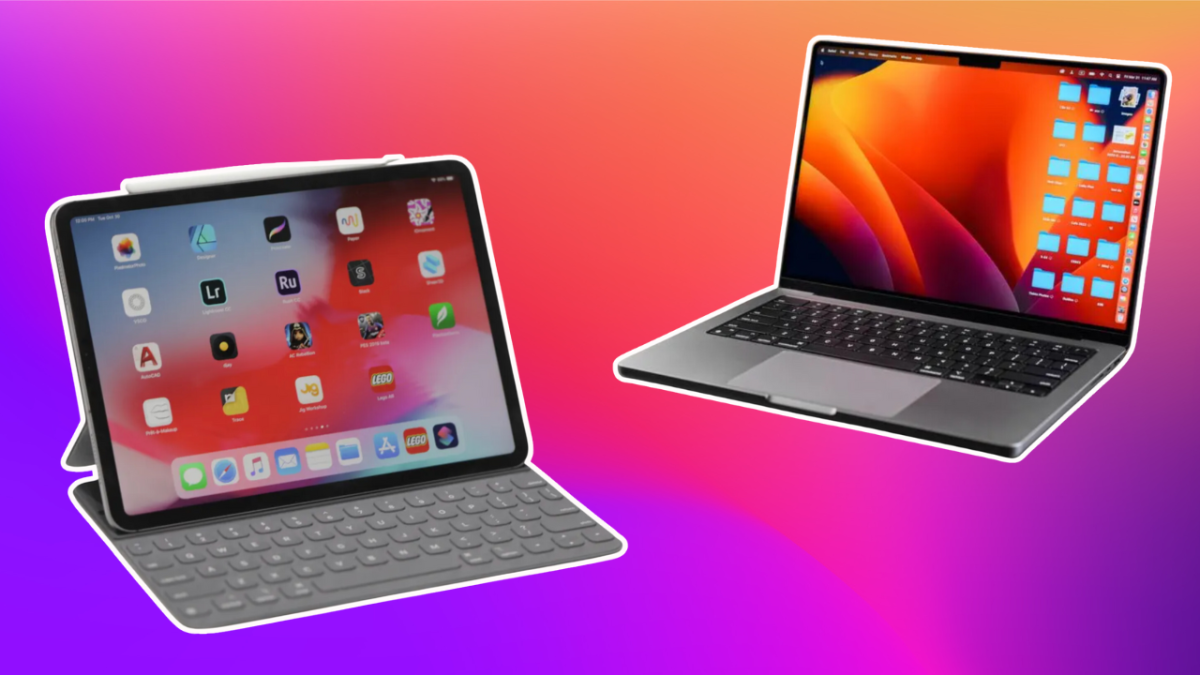The Price Gap: IPads And MacBooks – A Timeline

The Price Gap: IPads And MacBooks – A Timeline. Discover more detailed and exciting information on our website. Click the link below to start your adventure: Visit Best Website. Don't miss out!
Table of Contents
The Price Gap: iPads and MacBooks – A Timeline of Shifting Costs and Value
The seemingly simple question – "iPad or MacBook?" – becomes significantly more complex when considering price. Over the years, the price gap between Apple's iPad tablets and MacBook laptops has fluctuated dramatically, reflecting changes in technology, market positioning, and consumer demand. This timeline explores the evolution of pricing for both devices, highlighting key moments and analyzing the implications for consumers.
Early Days: A Clear Divide (2010-2012)
The original iPad's launch in 2010 established a clear price difference. MacBooks, even the entry-level models, were significantly more expensive, reflecting their greater processing power, full operating system, and keyboard/trackpad functionality. The iPad was positioned as a supplementary device, priced accordingly. This initial price gap reinforced the perception of the iPad as a consumption device, while MacBooks remained the productivity workhorses.
- Key takeaway: A substantial price difference reflected distinct functionalities and target audiences.
The Blurring Lines (2013-2017): iPad Pro's Emergence
The introduction of the iPad Pro line in 2015 began to blur the lines. While still generally cheaper than MacBooks, the increased processing power, larger screen sizes, and the introduction of the Apple Pencil narrowed the functionality gap. Higher-end iPad Pro models started encroaching on the affordability of entry-level MacBooks, presenting a compelling alternative for certain users.
- Key development: The iPad Pro challenged the traditional price hierarchy, offering more power at a relatively lower price point.
- Market impact: Consumers began to seriously consider iPads as viable alternatives for some productivity tasks.
The Convergence and Divergence (2018-Present): M-series Chips and Specialization
The arrival of Apple's M-series chips in MacBooks (2020 onwards) and iPads (2020 onwards) marked a turning point. While both benefitted from performance boosts, the pricing strategies diverged. MacBooks, particularly the Pro and Max models, saw price increases reflecting the substantial performance gains. The iPad, though gaining power, generally maintained a more affordable price range.
- Technological Advancements: M-series chips drastically increased performance in both devices, impacting pricing strategies differently.
- Market Segmentation: Apple seems to have reinforced specialized roles: iPads for content consumption and specific creative tasks, and MacBooks for power users and professional workflows.
Analyzing the Current Landscape:
Today, the price gap remains, but its significance has shifted. Entry-level iPads still offer considerably more budget-friendly options than even the most affordable MacBooks. However, high-end iPad Pros are now competing more directly with lower-end MacBooks in terms of price, but not necessarily in terms of overall functionality or software capabilities.
Choosing the Right Device:
The best choice – iPad or MacBook – depends entirely on individual needs and budget. Consider:
- Your primary use case: Web browsing, media consumption, and some creative tasks might be handled effectively by an iPad. Heavy multitasking, professional software usage, and demanding workloads are better suited to a MacBook.
- Software compatibility: Consider the availability of specific apps and software you need on each platform.
- Budget: iPads offer a broader range of price points, making them more accessible to a wider audience.
Conclusion:
The evolving price relationship between iPads and MacBooks is a compelling reflection of technological advancements and shifting market dynamics. Understanding this historical context is crucial for making an informed decision when choosing between these powerful Apple devices. Which will you choose? Let us know in the comments below!

Thank you for visiting our website wich cover about The Price Gap: IPads And MacBooks – A Timeline. We hope the information provided has been useful to you. Feel free to contact us if you have any questions or need further assistance. See you next time and dont miss to bookmark.
Featured Posts
-
 Trump Administration Halts Federal Dei Initiatives Employees Placed On Leave
Jan 24, 2025
Trump Administration Halts Federal Dei Initiatives Employees Placed On Leave
Jan 24, 2025 -
 Is Samsung Losing Its Edge The Need For Annual Phone Excitement
Jan 24, 2025
Is Samsung Losing Its Edge The Need For Annual Phone Excitement
Jan 24, 2025 -
 Gremio X Corinthians A Derrota Na Copa Sp Junior
Jan 24, 2025
Gremio X Corinthians A Derrota Na Copa Sp Junior
Jan 24, 2025 -
 Facing A Lithium Surplus Chiles Unwavering Commitment
Jan 24, 2025
Facing A Lithium Surplus Chiles Unwavering Commitment
Jan 24, 2025 -
 Omar Marmoushs Zukunft Von Wolfsburg Nach Manchester
Jan 24, 2025
Omar Marmoushs Zukunft Von Wolfsburg Nach Manchester
Jan 24, 2025
Latest Posts
-
 Deckee App Yanchep News On Dfes And Marine Rescue Wa Collaboration
Feb 05, 2025
Deckee App Yanchep News On Dfes And Marine Rescue Wa Collaboration
Feb 05, 2025 -
 Adrianne Baums Impact On Contemporary Art A Critical Analysis
Feb 05, 2025
Adrianne Baums Impact On Contemporary Art A Critical Analysis
Feb 05, 2025 -
 Is Puto Offensive A Sensitivity Guide To Its Usage
Feb 05, 2025
Is Puto Offensive A Sensitivity Guide To Its Usage
Feb 05, 2025 -
 C Battery Recycling A Guide To Responsible Disposal
Feb 05, 2025
C Battery Recycling A Guide To Responsible Disposal
Feb 05, 2025 -
 Sam Newman Fresh Allegations Surface Regarding Blair Interview
Feb 05, 2025
Sam Newman Fresh Allegations Surface Regarding Blair Interview
Feb 05, 2025
